When it comes to herbal tea a non‑caffeinated infusion made from plants other than Camellia sinensis, most people picture a soothing cup of chamomile after dinner or a refreshing hibiscus brew on a hot day. The reality is that many of these teas contain bioactive compounds that can change how prescription medication a pharmaceutical product used to prevent, treat, or diagnose disease works in the body. Below is a practical guide to the most common interaction mechanisms, the teas you should watch, and steps you can take to stay safe.
Why Herbal Tea Interactions Matter
Even though brewed teas are generally milder than concentrated extracts, research shows that certain compounds can significantly alter drug absorption, metabolism, or effect. A 2022 Mayo Clinic review found that about 70% of older adults use herbal products, yet only a quarter tell their doctors - a perfect storm for hidden risks. The FDA warns that some tea‑medication combos can increase bleeding or stroke risk, especially with drugs that have a narrow therapeutic index such as warfarin or digoxin.
How Interactions Happen
Two main pathways drive tea‑drug interactions:
- Pharmacokinetic - the tea changes how the body absorbs, distributes, metabolizes, or eliminates the drug.
- Pharmacodynamic - the tea adds to or counteracts the drug’s effect.
For example, green tea catechins inhibit the drug transporter OATP1A2, reducing the amount of certain statins that reach the bloodstream. At the same time, apigenin in chamomile can tweak cytochrome P450 enzymes, potentially lowering the effectiveness of oral contraceptives.
High‑Risk Herbal Teas and Their Key Interactions
| Herbal Tea | Active Compound(s) | Medication(s) Affected | Interaction Type |
|---|---|---|---|
| Green tea (brewed) | Epigallocatechin gallate (EGCG) | Atorvastatin, Nadolol, Simvastatin, Fluoroquinolones | Reduced absorption (OATP inhibition) / ↑ drug levels (P‑gp inhibition) |
| Chamomile | Apigenin | Oral contraceptives, Sedatives | Increased metabolism (CYP3A4) / additive sedative effect |
| St. John’s wort | Hypericin, Hyperforin | Warfarin, Antiretrovirals, Immunosuppressants (Cyclosporine) | Induced metabolism (CYP450) → lower drug levels |
| Ginkgo biloba | Flavonol glycosides, Terpene lactones | Warfarin, Aspirin, Clopidogrel | Increased bleeding risk (antiplatelet) |
| Hibiscus | Anthocyanins, Organic acids | Lisinopril, Other ACE inhibitors | Potentiated blood‑pressure lowering (ACE inhibition) |
| Goldenseal | Berberine | Various CYP2D6/3A4 substrates (e.g., Metoprolol) | Enzyme inhibition → higher drug concentrations |
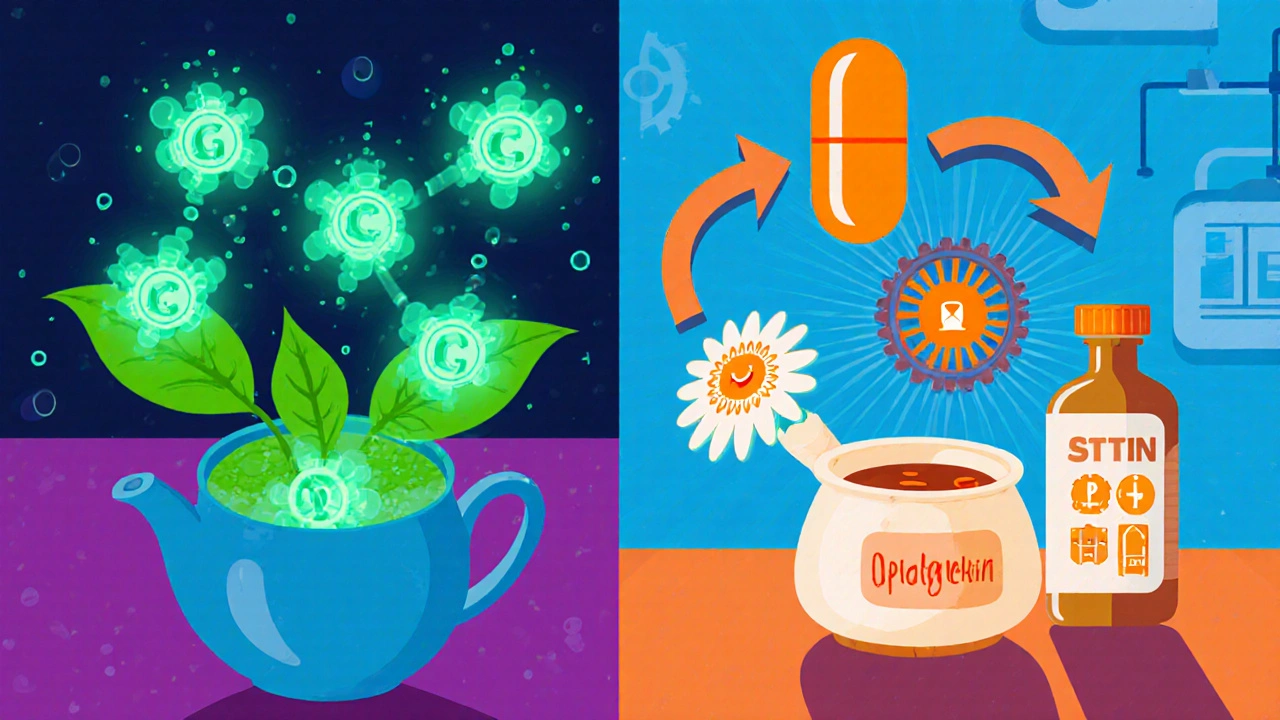
What the Numbers Say
Research quantifies the impact for a few high‑profile combos. A 2023 NCCIH study showed green tea extract cut atorvastatin blood levels by up to 39% and nadolol by a striking 85%. In vitro work cited by the AAFP confirmed that green tea can boost simvastatin concentrations 2.3‑fold due to P‑glycoprotein inhibition. For warfarin, case reports link ginkgo biloba to INR spikes that raise bleeding risk, while goldenseal’s berberine blocks CYP3A4, potentially doubling levels of drugs like metoprolol.
Practical Steps to Avoid Problems
- Make a list. Write down every medication (prescription, OTC, supplement) and every herbal tea you drink, including strength and frequency. Bring this list to every doctor’s visit.
- Ask your provider. Specifically mention brewed teas-not just pills or capsules. Many clinicians overlook tea consumption because patients don’t think of it as a supplement.
- Time it right. When possible, separate tea intake from medication doses by at least two hours. This reduces competition for absorption pathways.
- Watch the brew strength. Concentrated extracts pose higher risk than a typical 8‑oz cup. If you enjoy “functional blends” with many herbs, treat them like a supplement and discuss with your pharmacist.
- Know the red flags. Avoid green tea, ephedra, or guarana if you’re on narrow‑range drugs (warfarin, digoxin, theophylline, lithium). Skip ginkgo, garlic, and ginseng if you’re on anticoagulants.
- Monitor labs. For drugs like warfarin, digoxin, or cyclosporine, ask for more frequent blood tests when you start a new tea habit.
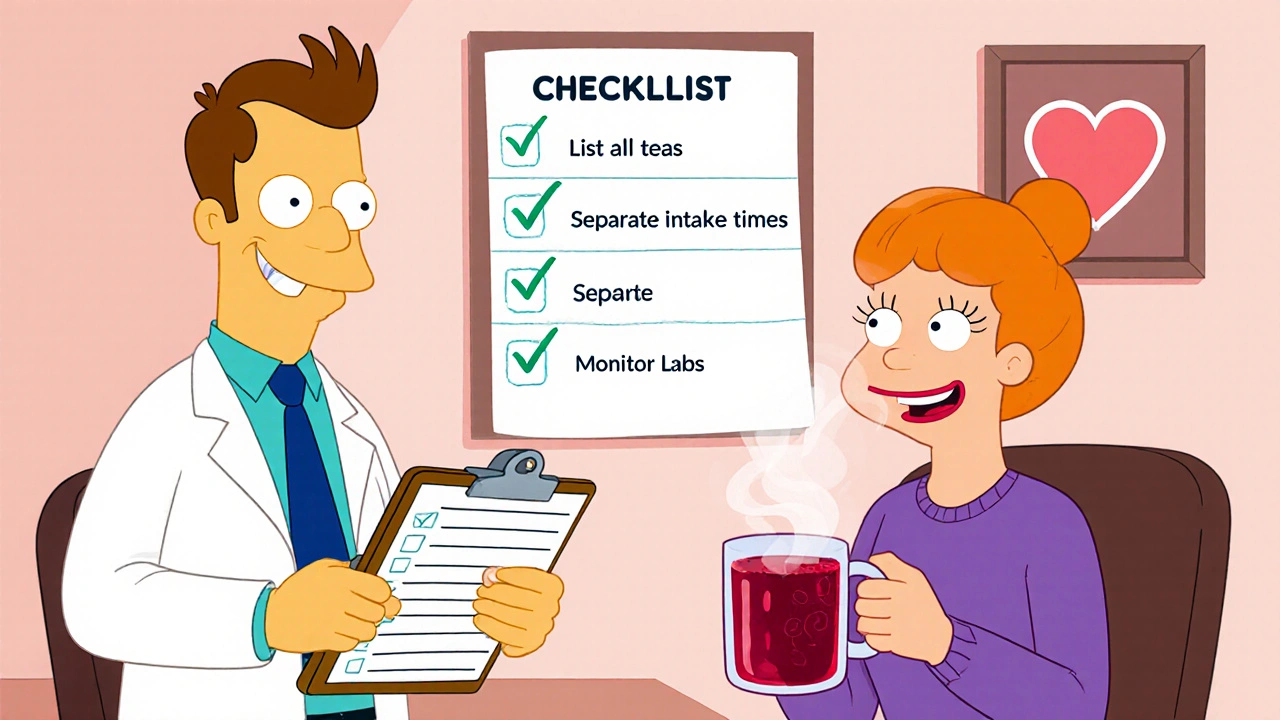
When to Seek Professional Help
Any of the following signs merit a call to your healthcare provider:
- Unexpected bruising or bleeding
- Sudden changes in blood pressure (high or low)
- New heart palpitations or irregular beats
- Symptoms of toxicity such as nausea, dizziness, or confusion
These could signal that a tea is interfering with your medication’s intended effect.
Future Directions in Research
Funding has started to catch up with public interest. The NCCIH poured $4.2 million into herb‑drug interaction studies in 2023, focusing on green tea, chamomile, and hibiscus. The FDA’s Botanical Review Team now follows standardized testing protocols, and the European Medicines Agency has added interaction warnings for 17 common teas. Expect more clinical‑trial data in the next few years, especially around poly‑herbal blends that are booming in the functional‑beverage market.
Bottom Line
Herbal teas can be wonderful, but they’re not always harmless when you’re on prescription medication. The safest approach is transparency: tell your doctor what you sip, keep timing sensible, and stay alert for any unusual symptoms. By treating your daily cup like any other medication, you protect yourself while still enjoying the flavors you love.
Can a single cup of green tea affect my statin?
One standard cup (about 240 ml) of strong brewed green tea contains enough EGCG to modestly inhibit OATP transporters, which may lower statin absorption by roughly 10‑15%. The effect becomes clinically relevant when you drink multiple cups daily or use concentrated extracts.
Is chamomile safe with blood‑pressure meds?
Chamomile has mild sedative properties and can slightly boost the effect of antihypertensive drugs that work through vasodilation. Most people can drink a cup a day without issue, but if you’re on high doses of ACE inhibitors or diuretics, monitor your blood pressure for a dip below 90 mmHg.
What should I do if I forget to mention my tea habit?
Contact your prescriber as soon as you remember. Provide details on the type of tea, how strong it was, and how often you drink it. Your doctor may adjust the medication dose or schedule a lab test to check levels.
Do herbal tea extracts pose a bigger risk than brewed tea?
Yes. Extracts concentrate the active compounds manyfold, often delivering doses that mimic pharmaceutical levels. For example, green tea extract capsules have been shown to cut nadolol bioavailability by 85%, far more than a regular cup.
Are there any reliable apps to track herb‑drug interactions?
Several medical‑grade apps now include herb‑drug databases, such as Medisafe and Drugs.com. Look for tools that list brewed teas specifically, not just supplement capsules, and that cite sources like NCCIH or the FDA.

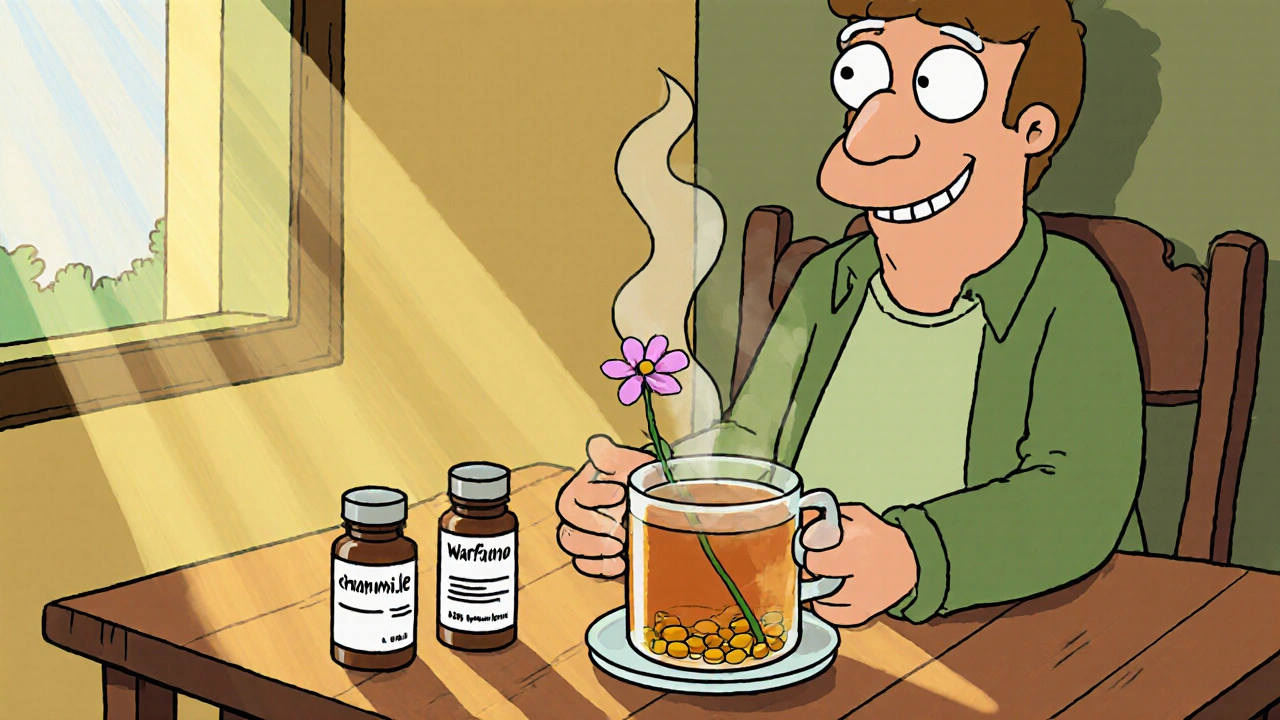
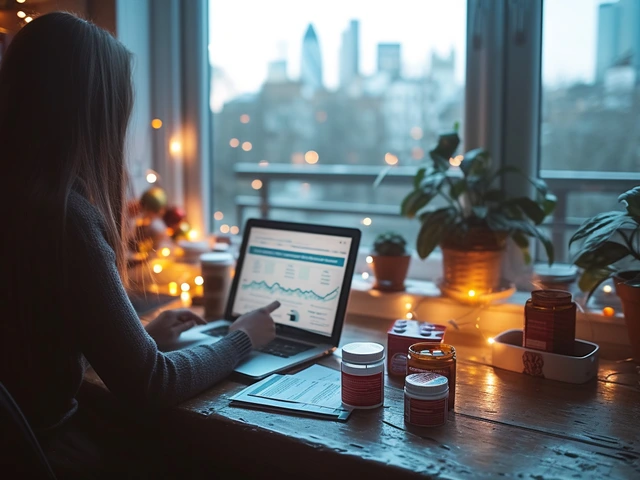
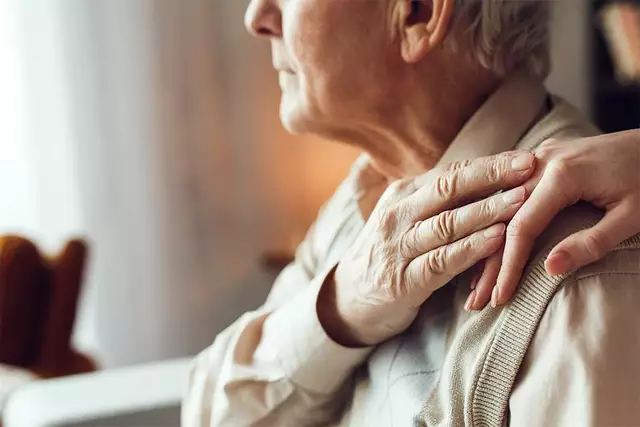
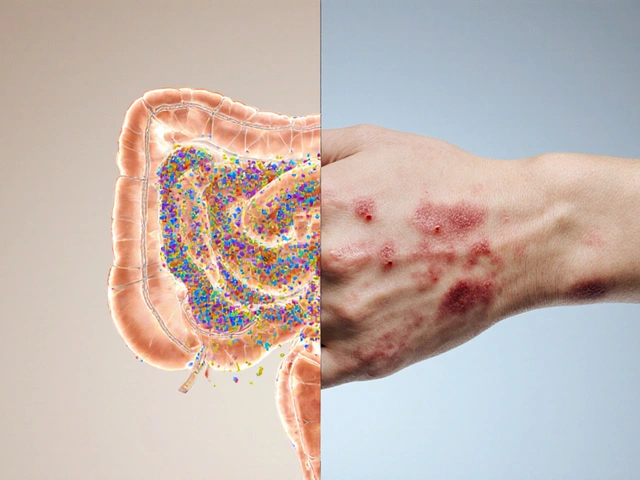
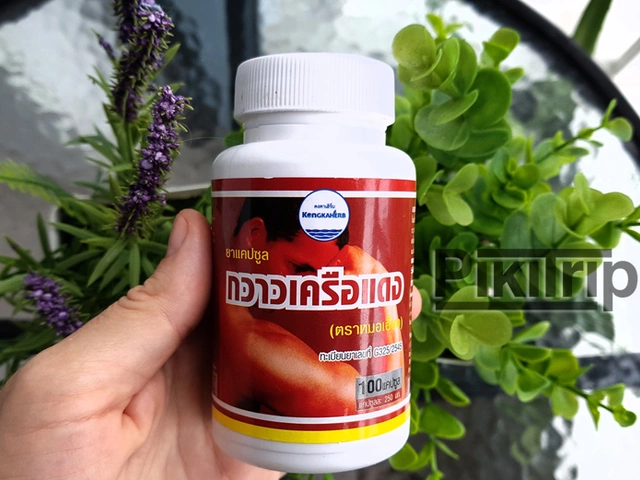
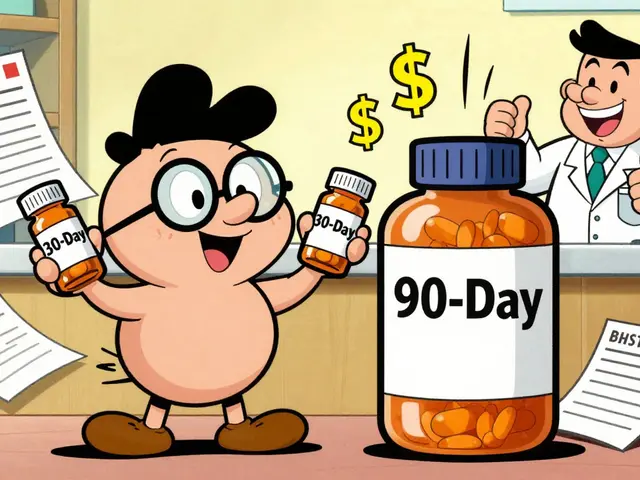
Melanie Vargas
October 24, 2025 AT 18:27Great rundown! 🌿 I love how you broke down the mechanisms so clearly – pharmacokinetic vs pharmacodynamic is easy to get tangled in. Also, the table is super handy for quick reference when you’re sipping your tea. I’ll definitely start keeping a tea‑medication log like you suggested. Thanks for making this both informative and approachable! 😊
Tamara Schäfer
November 4, 2025 AT 03:31I think this guide is a wonderful stepping stone toward safer self‑care, especially for folks who might think "a cup of tea is just water with flavor". The chemistry behind those humble leaves is actually mind‑blowing when you consider how many enzymes can be nudged by apigenin, EGCG, or berberine. People often overlook the cumulative effect of drinking multiple cups a day; it can shift drug plasma levels in ways that feel subtle at first but become more pronounced over weeks. The author nailed the point about timing – a two‑hour gap is a practical rule of thumb that can prevent a lot of unnecessary side‑effects. It also feels encouraging that you don’t have to ditch your favorite brew; just be aware and possibly tweak strength or frequency. The stats on older adults are especially eye‑opening – 70% using herbs but only 25% telling their doc shows a huge communication gap. By fostering that dialogue, we can cut down on nasty surprises like unexpected bruising or all‑of‑a‑sudden hypotension. Keep in mind that the body is a dynamic system; interactions can shift if you start a new supplement, change diet, or even adjust sleep patterns. So the “make a list” tip can become a living document, not a static sheet. And yes, the fear of missing out on the comforting ritual should not outweigh the benefit of staying safe – it’s all about balance and informed choices. Hope this inspires more people to bring their tea habit into the medical conversation, cuz knowledge is power! 😄
Tamara Tioran-Harrison
November 14, 2025 AT 13:34Oh great, another tea‑warning list. 🙄
kevin burton
November 24, 2025 AT 23:38Actually, it’s useful. The article points out specific combos like green tea with statins, which many people overlook. Simple steps like spacing drinks can keep you safe without giving up your brew.
Max Lilleyman
December 5, 2025 AT 09:41Honestly, if you’re not a pharmacist, you’ll probably ignore all this and keep drinking hibiscus like it’s harmless. The truth is, these herbs can mess with blood pressure meds, and most doctors won’t ask you about your nightly tea. 🙃
Brett Witcher
December 15, 2025 AT 19:45While the sentiment is appreciated, one must consider the methodological rigor of the cited studies. The pharmacokinetic interactions cited, such as OATP inhibition by catechins, are derived from in vitro models that may not fully recapitulate in vivo dynamics. Therefore, a nuanced interpretation is warranted before making blanket recommendations.